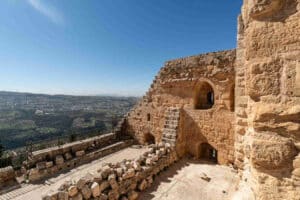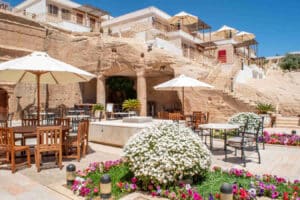The Amman Citadel is one of the most interesting places in the capital. As such, it is included in the places with free access with the Jordan Pass, that great cultural ‘passport’ that we have been talking about in previous posts. Now it is the turn of this space full of history, which we have already referred to in some article, but which we now analyze in depth.
What is the Amman Citadel and where is it Located?
The Amman Citadel is the authentic founding nucleus of the city. And that is saying a lot, since the Jordanian capital has the honor of being one of the oldest continuously inhabited cities. Specifically, it is known that this hill, called today Jebel al-Qala’a (that is, mountain of the fortress) was occupied for the first time in the Bronze Age, sometime before 2000 BC.
Some centuries later, this settlement was walled and maintained commercial relations with other cities of the eastern Mediterranean. The Israelites called it
What Monuments Does the Amman Citadel Preserve?
Due to the turbulent and extensive history that we mentioned above, the main monuments and vestiges that can be visited in the Amman Citadel date back to two major periods: the Roman and the Arab. Of the latter, the Umayyad Palace stands out, which we talked about in depth in this other post.
But said palace is not the only important vestige of the Umayyad era: it is also worth mentioning the cistern, which supplied water to the entire complex, especially to thermal baths and latrines located in the surroundings. Currently it is empty of water, logically, and that allows us to admire the expertise of the Umayyad masters in this type of engineering works. The Umayyad mosque is also recognizable, but only the remains of its prayer hall and the evocative entrance portal remain.
As for the aforementioned Ayyubid period, the most outstanding thing that remains is the watchtower, at the southern end of the enclosure. The panoramic views from there allow us to understand its strategic importance.
And if we go back to the Roman period, we find some of the most photographed and symbolic vestiges of the place. In particular, the imposing Temple of Hercules, which was built in the times of Emperor Marcus Aurelius (2nd century AD). Some of its columns are still standing, defying the passage of time. But the most surprising thing is three gigantic fingers of the hand of the statue of the divinity, which gives an account of the magnitude of the temple that was projected and of the precision of the sculptors for such a titanic work as this.
On the other hand, the remains of a Byzantine basilica give us an account of the survival of this hill as a fundamental nucleus in the city that inherited that civilization, already Christian. The remains of villas and houses from that time have also been recognized, which make up an authentic open-air archaeological museum.
But precisely, in the Amman Citadel is located the Archaeological Museum, which is the best place to get to know the place in an orderly and contextualized way. Here are exhibited archaeological pieces extracted directly from this defensive and urban enclosure, and we talk about it in this other post about the museums of the city.



